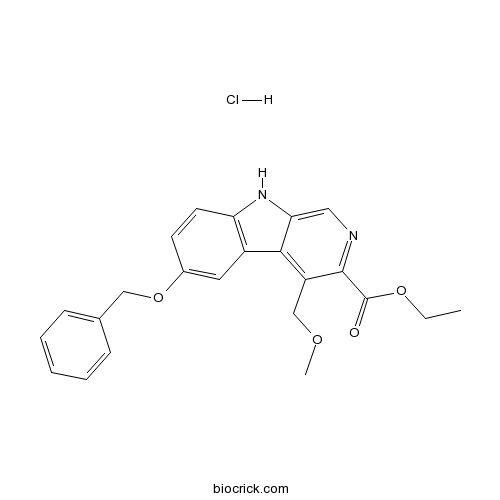Membrane Transporter/Ion Channel
Ion channels are pore-forming membrane proteins whose functions include establishing a resting membrane potential, shaping action potentials and other electrical signals by gating the flow of ions across the cell membrane, controlling the flow of ions across secretory and epithelial cells, and regulating cell volume. Ion channels are present in the membranes of all cells. Ion channels are one of the two classes of ionophoric proteins, along with ion transporters (including the sodium-potassium pump, sodium-calcium exchanger, and sodium-glucose transport proteins)
Products for Membrane Transporter/Ion Channel
- P2X purinergic receptor(31)
- Calcium Channel(77)
- Potassium Channel(80)
- NMDA Receptor(80)
- Sodium Channel(43)
- ATPase(32)
- TRP Channel(44)
- Proton Pump(12)
- AMPAR(49)
- GABA Receptor(103)
- Glycine Transporters(6)
- Chloride Channels(11)
- Glutamate (EAAT) Transporters(19)
- GTPase(7)
- Other Channel Modulators(7)
- CFTR(10)
- Multidrug Transporters(4)
- M2 ion Channel(1)
- Monoamine transporter(4)
- P-gp(6)
- TRPV1(4)
- MCT(2)
- Na+/Ca2+ Exchanger(7)
- Cannabinoid Transporters(7)
- Nucleoside Transporters(3)
- Lipophilic platinum complex(1)
- Monocarboxylate Transporters(1)
- NKCC(2)
- Gardos Channel(1)
- Glycine Receptors(1)
- MCT2(2)
- Glucose Transporters(1)
- ICB(2)
- GlyT1(2)
- Kv1.3(1)
- URAT1(1)
- Cat.No. Product Name Information
-
BCC6918
2-Methylthioadenosine triphosphate tetrasodium salt
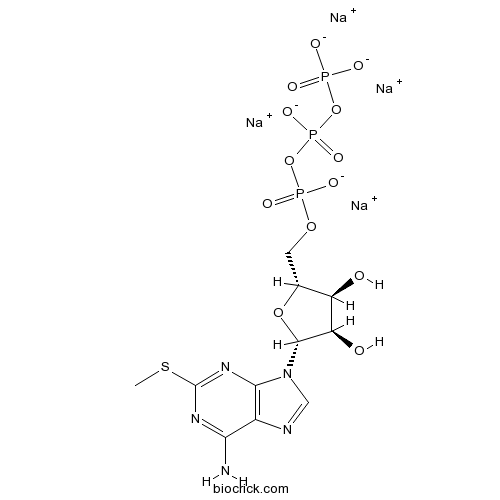
-
BCC5690
Camstatin

-
BCC5239
Lercanidipine
Lercanidipine is a calcium channel blocker of the dihydropyridine class.
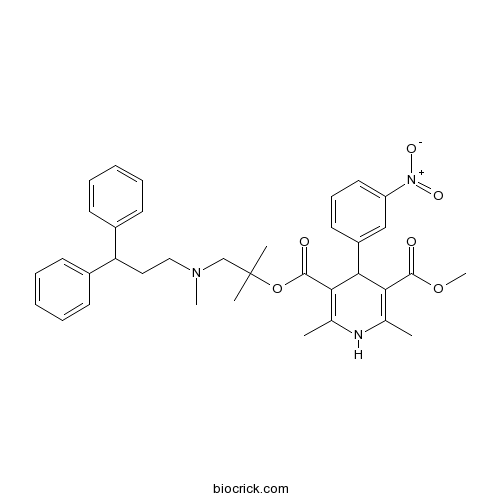
-
BCC6904
1-EBIO
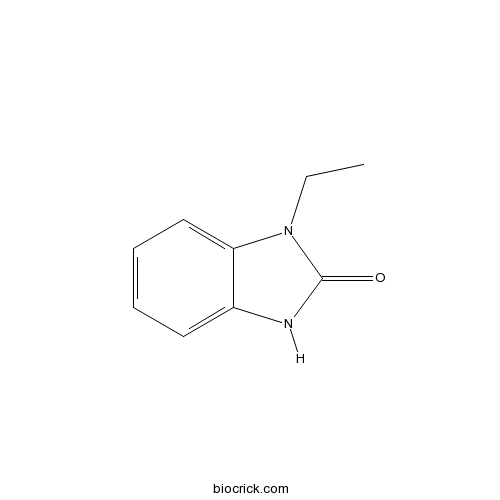
-
BCC6561
(RS)-CPP
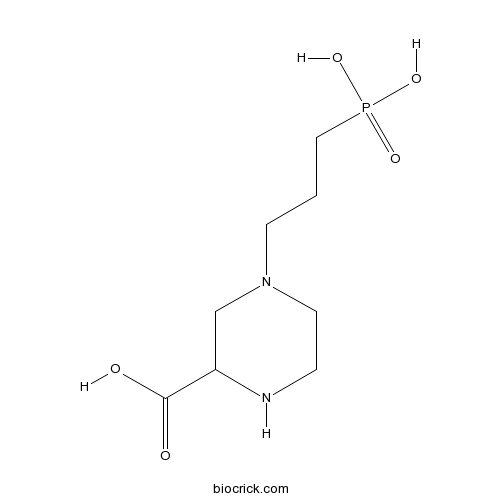
-
BCC7971
Gadolinium chloride
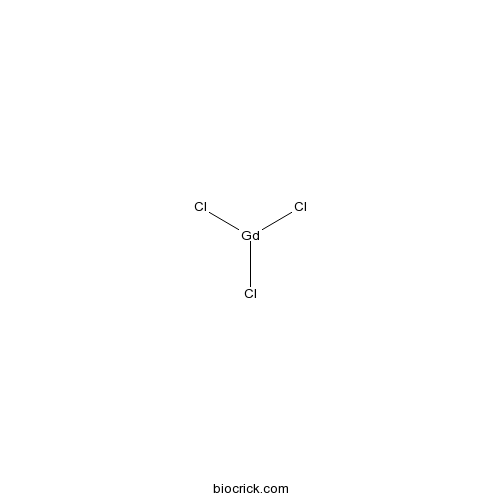
-
BCC1914
S0859
S0859 is a selective, high-affinity generic NBC inhibitor. S0859 reversibly inhibits NBC-mediated intracellular pH (pHi) recovery (Ki=1.7 μM, full inhibition at approximately 30 μM).
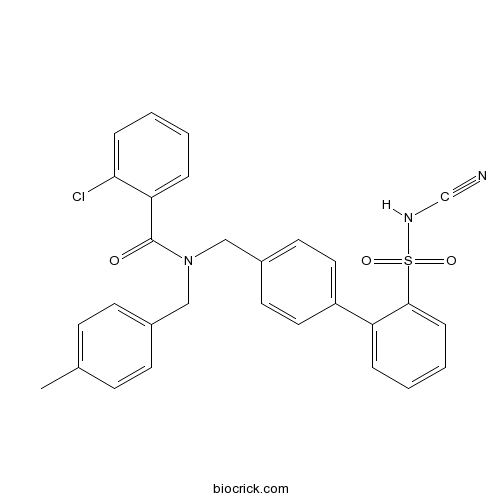
-
BCC7015
PPNDS
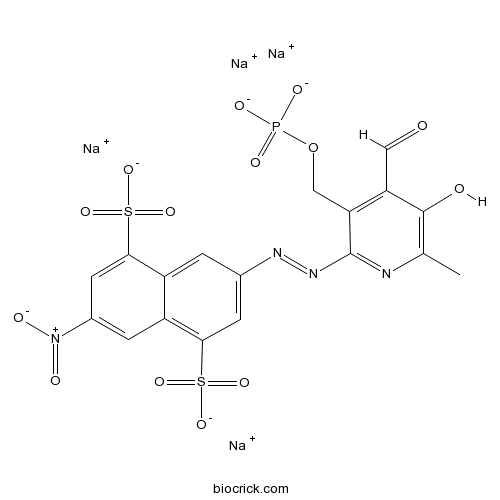
-
BCC7004
ARL 67156 trisodium salt
ARL67156 trisodium salt is an inhibitor of ecto-ATPase. ARL 67156 is a weak competitive inhibitor of NTPDase1 (CD39), NTPDase3 and NPP1, with Kis of 11, 18 and 12 μM, respectively.
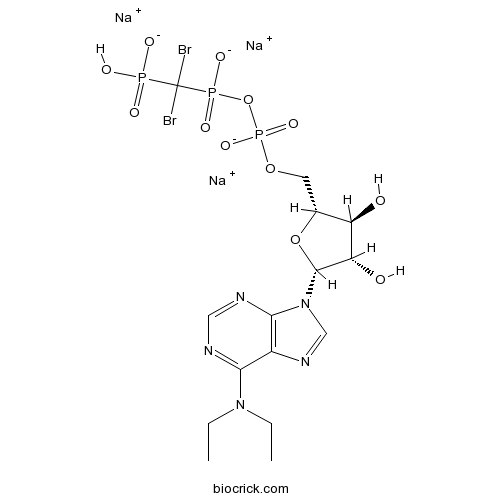
-
BCC7769
RN 1747
RN-1747 is a selective transient receptor potential cation channel subfamily V member 4 (TRPV4) agonist, with EC50 values are 0.77 μM, 4.0 μM and 4.1 μM for hTRPV4, mTRPV4 and rTRPV4 respectively. RN-1747 also antagonizes TRPM8, with an IC50 of 4 μM.
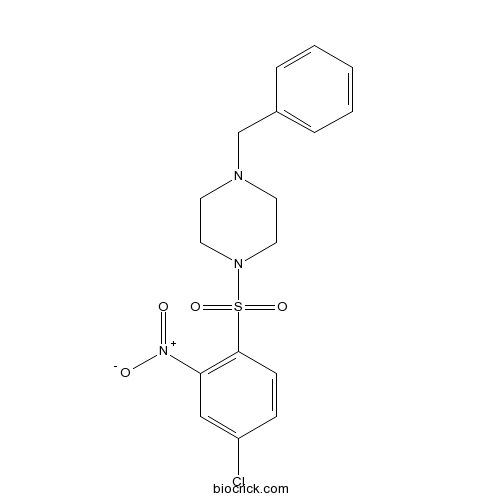
-
BCC5432
Pantoprazole
Pantoprazole (BY1023; SKF96022) is a proton pump inhibitor drug used for short-term treatment of erosion and ulceration of the esophagus caused by gastroesophageal reflux disease.
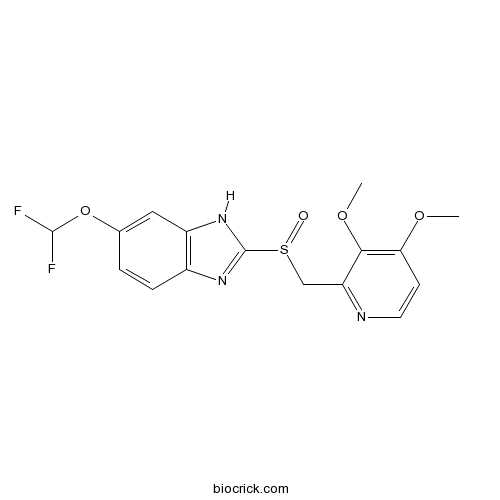
-
BCC7548
RO-3
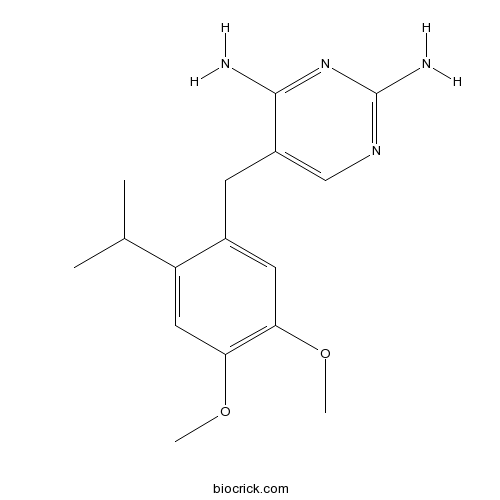
-
BCC7072
GYKI 52466 dihydrochloride
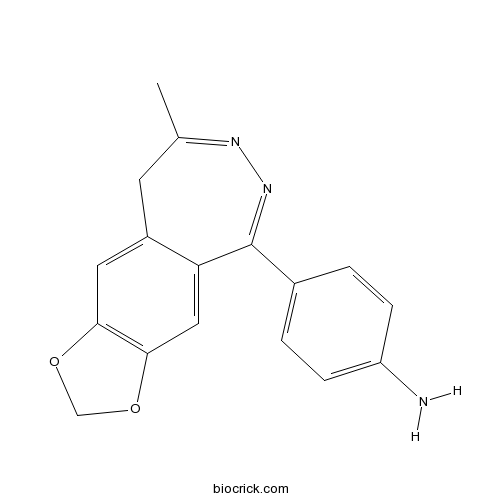
-
BCC6012
RuBi-GABA
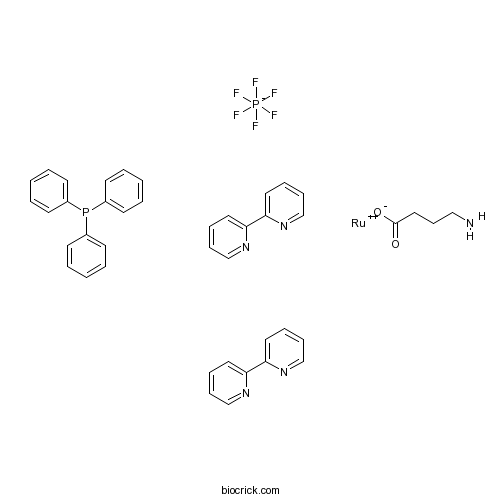
-
BCC7445
L-364,373
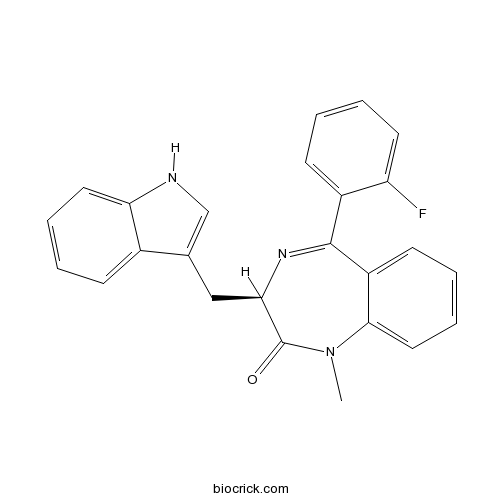
-
BCC1058
Lansoprazole
Lansoprazole(AG 1749) is a proton pump inhibitor which prevents the stomach from producing acid.
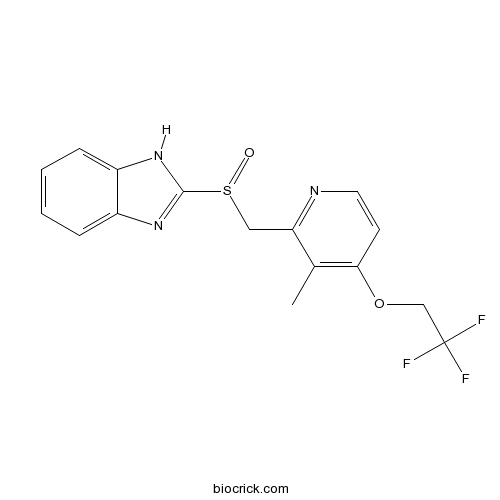
-
BCC4403
Lacidipine
Lacidipine is a L-type calcium channel blocker, used for treating high blood pressure.
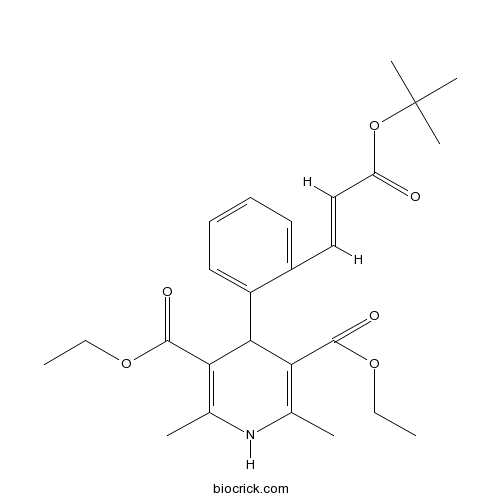
-
BCC6997
SR 95531 hydrobromide
Gabazine is a selective and competitive antagonist of GABAA receptor, with an IC50 of ~0.2 μM for GABA receptor.
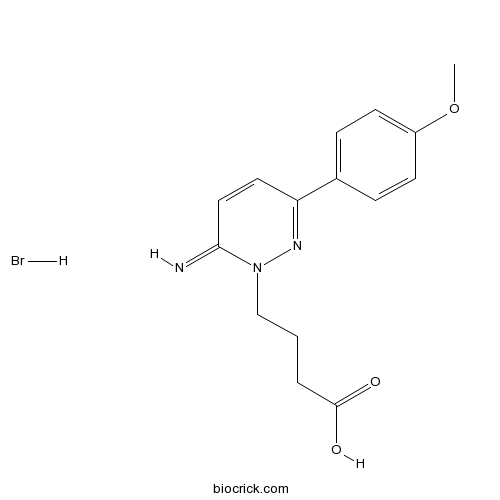
-
BCC7367
NF 157
NF157 is a highly selective nanomolar P2Y11 antagonist with a pKi of 7.35. The IC50s are 463 nM, 1811 µM, 170 µM for P2Y11 (Ki=44.3 nM), P2Y1 (Ki=187 µM), P2Y2 (Ki=28.9 µM), respectively. NF157, significantly reduces expression of metalloproteinase (MMP)-3, MMP-13, can be used in the treatment of osteoarthritis (OA).
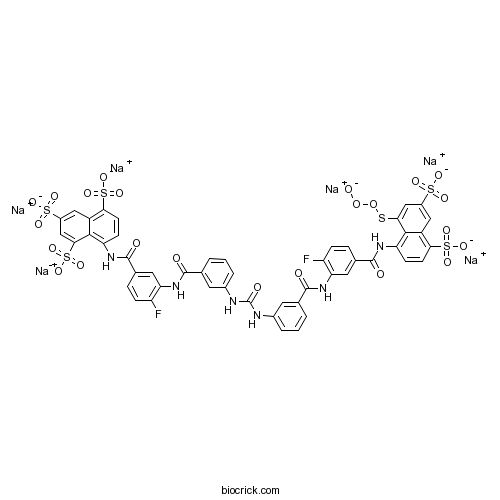
-
BCC6985
NF 023
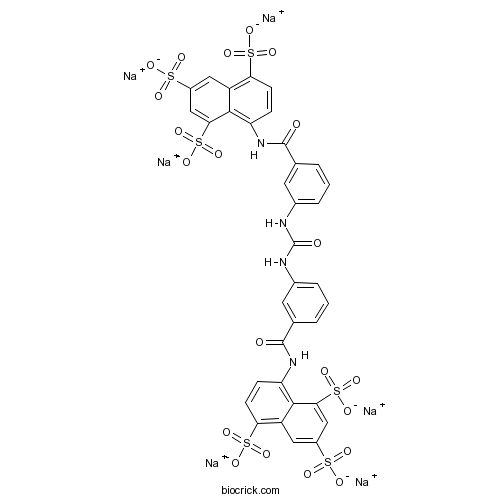
-
BCC7476
Naspm trihydrochloride
Naspm trihydrochloride (1-Naphthylacetyl spermine trihydrochloride), a synthetic analogue of Joro spider toxin, is a calcium permeable AMPA (CP-AMPA) receptors antagonist.
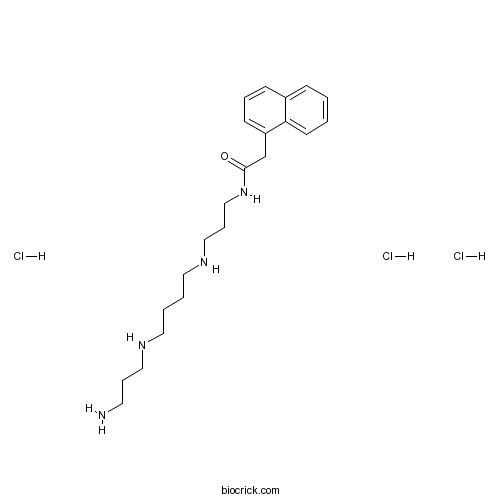
-
BCC6157
Ro 51
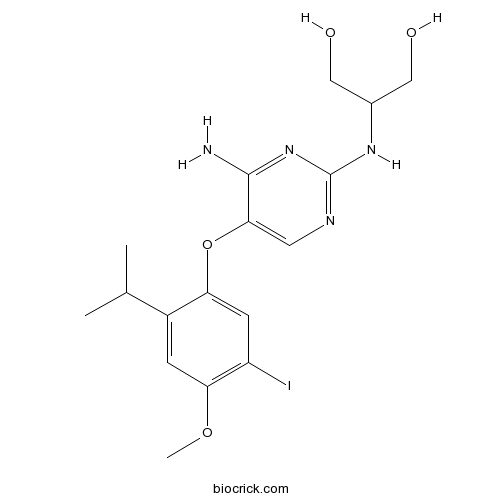
-
BCC7417
PSB 06126
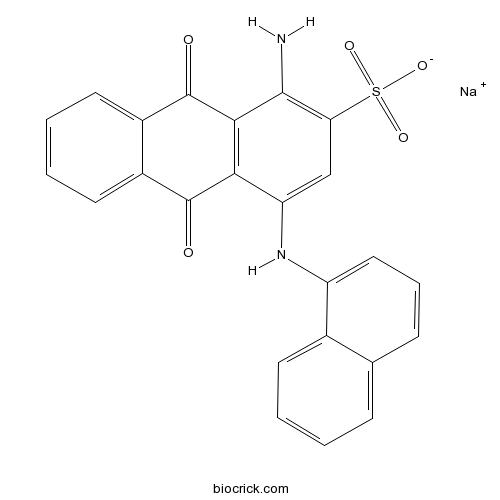
-
BCC5005
Nateglinide
Nateglinide, a D-phenylalanine derivative, is an orally active and short-acting insulinotropic agent and a DPP IV inhibitor. Nateglinide inhibits ATP-sensitive K+ channels in pancreatic β-cells. Nateglinide is used for the treatment of type 2 (non-insulin-dependent) diabetes mellitus[1][2].
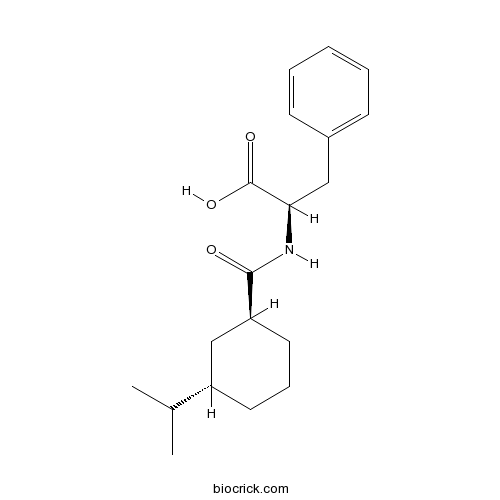
-
BCC7288
STEARDA
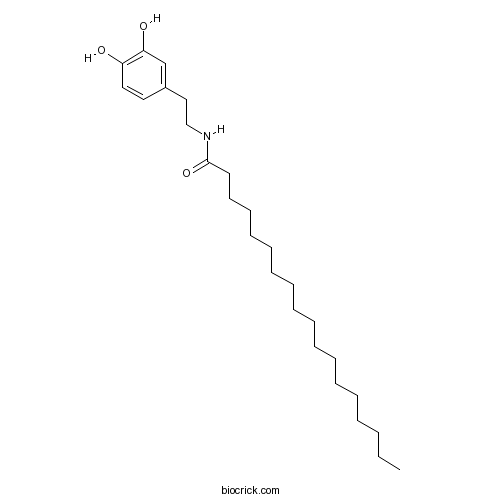
-
BCC7138
OLDA
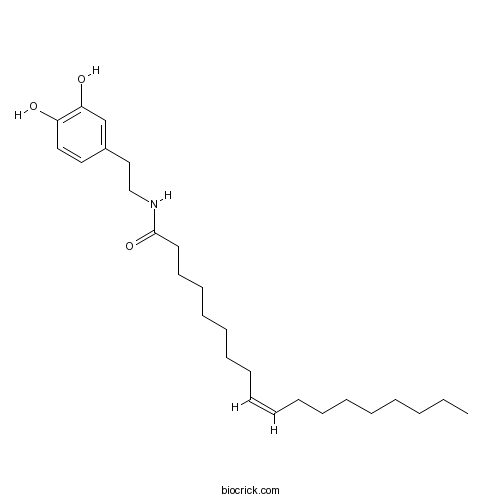
-
BCC5078
Rufinamide
Rufinamide(E 2080; CGP 33101; RUF 331) is a new antiepileptic agent that differs structurally from other antiepileptic drugs and is approved as adjunctive therapy for Lennox-Gastaut syndrome (LGS).
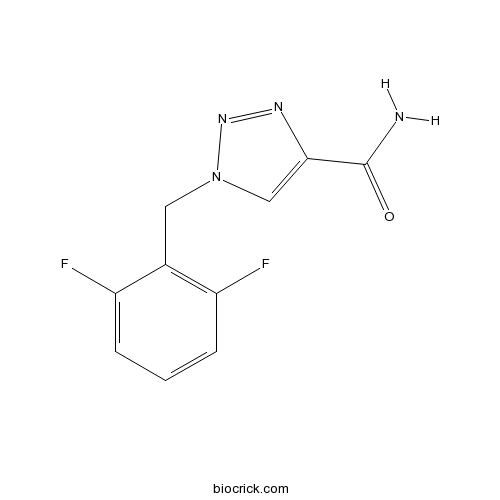
-
BCC5700
ω-Conotoxin GVIA

-
BCN2744
Sarcosine
Sarcosine is a glycine transporter type 1 (GlyT) inhibitor and an N-methyl-D-aspartate (NMDA) receptor co-agonist at the glycine binding site.
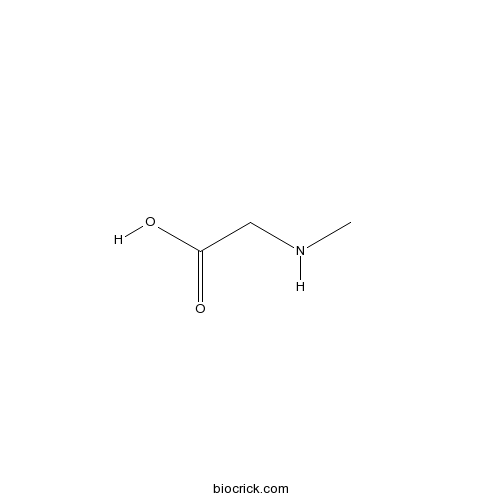
-
BCC6711
NPPB
NPPB is a blocker of the outwardly rectifying chloride channel (ORCC).
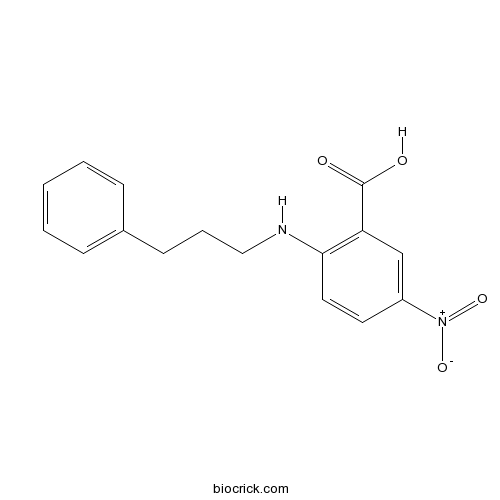
-
BCC7303
CGS 9343B
Zaldaride maleate (CGS-9343B) is a potent, orally active and selective inhibitor of calmodulin. Zaldaride maleate (CGS-9343B) inhibits CaM (calmodulin)-stimulated cAMP phosphodiesterase activity, with an IC50 of 3.3 nM. Zaldaride maleate (CGS-9343B) prevents estrogen-induced transcription activation by ER, reversibly blocks voltage-activated Na+, Ca2+ and K+ currents in PC12 cells and inhibits nAChR.
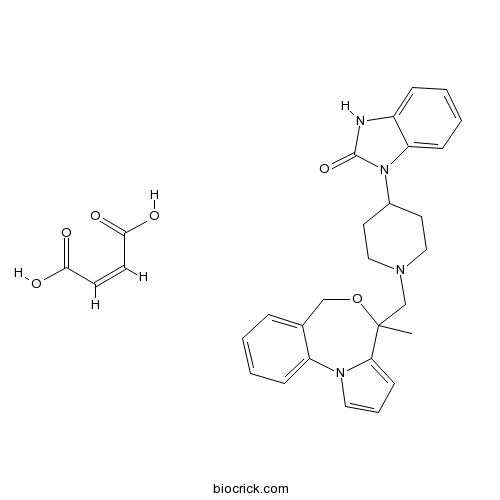
-
BCC7010
CI 966 hydrochloride
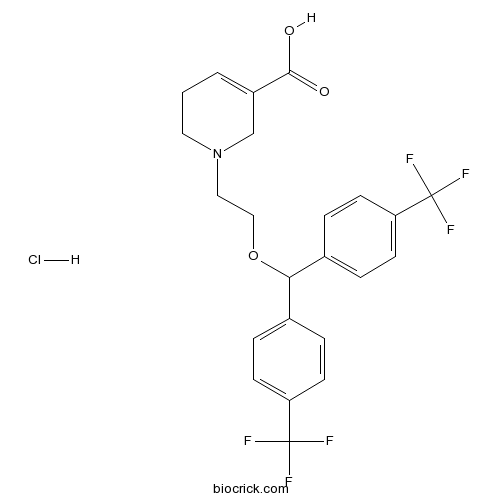
-
BCC6986
CGS 19755
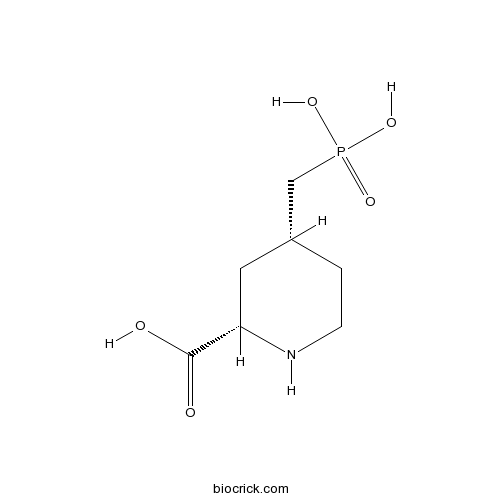
-
BCC1770
ML-7 hydrochloride
ML-7 hydrochloride is a naphthalene sulphonamide derivative, potently inhibits MLCK (IC50=300 nM).
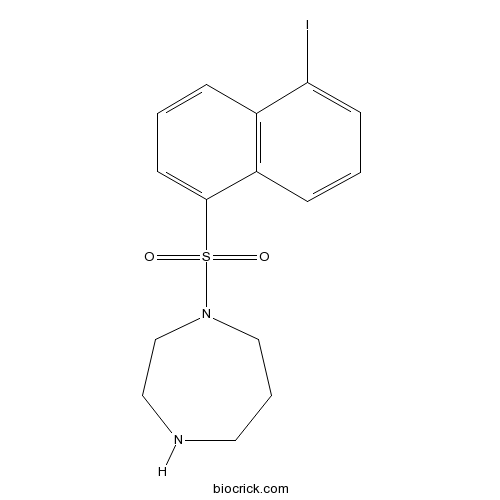
-
BCC7767
Efonidipine hydrochloride monoethanolate
Efonidipine hydrochloride monoethanolate (NZ-105 hydrochloride monoethanolate) is a dual T-type and L-type calcium channel blocker (CCB).
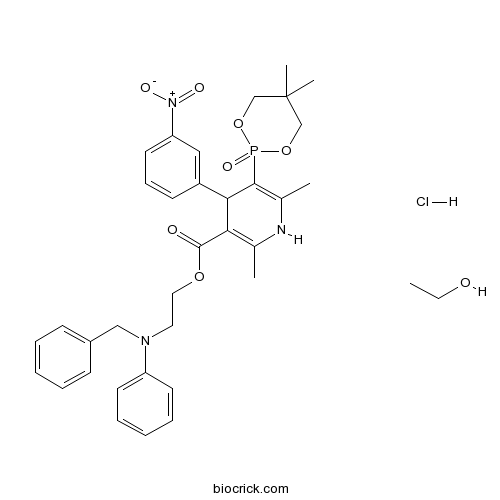
-
BCC7067
Ruthenium Red
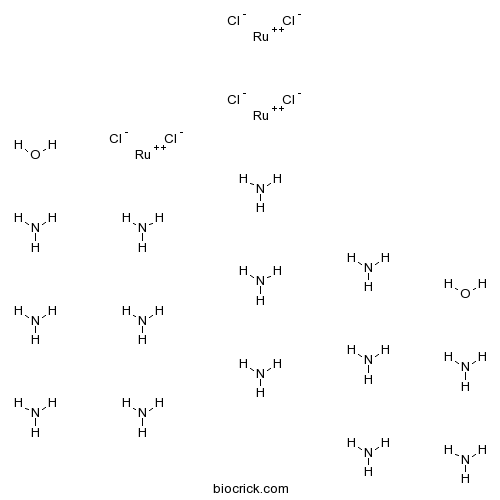
-
BCC7404
NF 110
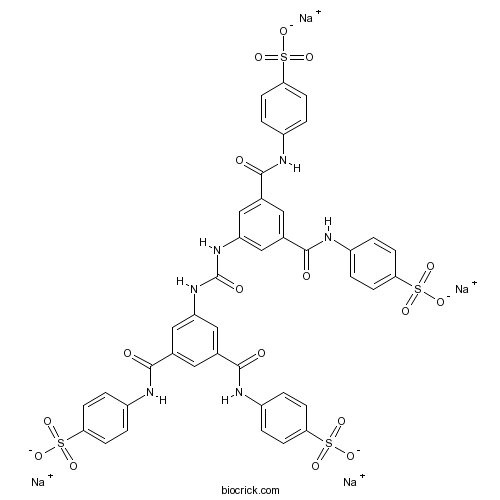
-
BCC7375
CGS 20625
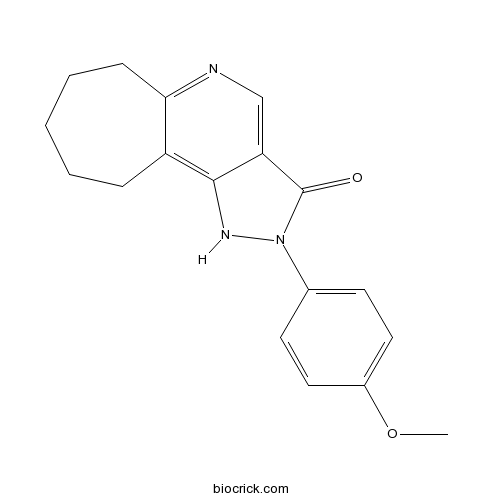
-
BCC4397
Amlodipine Besylate
Amlodipine besylate is a long-acting calcium channel blocker.
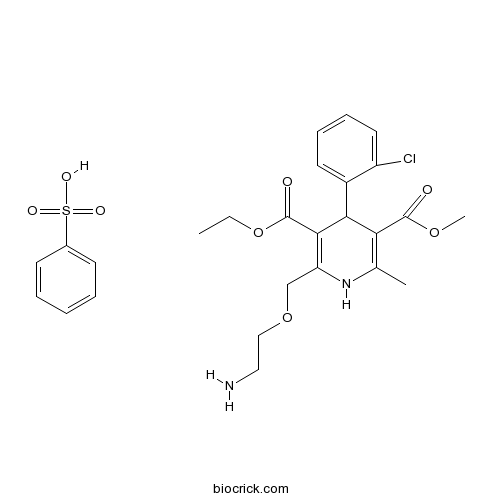
-
BCC6571
L-Cysteinesulfinic acid
L-Cysteinesulfinic acid is a potent agonist at several rat metabotropic glutamate receptors (mGluRs) with pEC50s of 3.92±0.03, 4.6±0.2, 3.9±0.2, 2.7±0.2, 4.0±0.2, and 3.94±0.08 for mGluR1, mGluR5, mGluR2, mGluR4, mGluR6, and mGluR8, respectively.
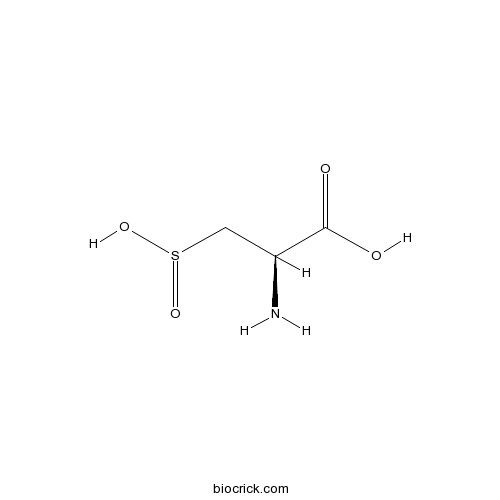
-
BCC7129
Remacemide hydrochloride
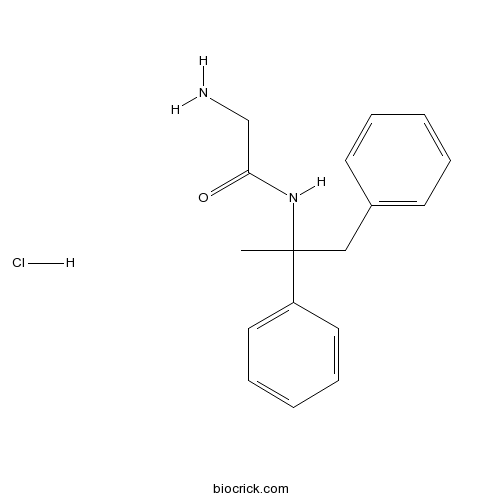
-
BCC6589
(S)-(-)-HA-966
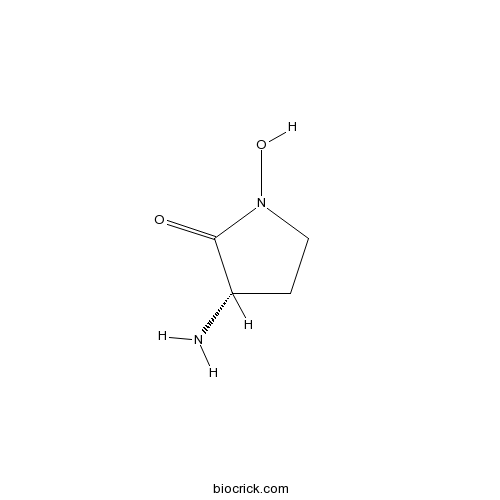
-
BCC7692
UCPH 101
UCPH-101 is an excitatory amino acid transporter subtype 1 (EAAT1) inhibitor with an IC50 of 0.66 μM.
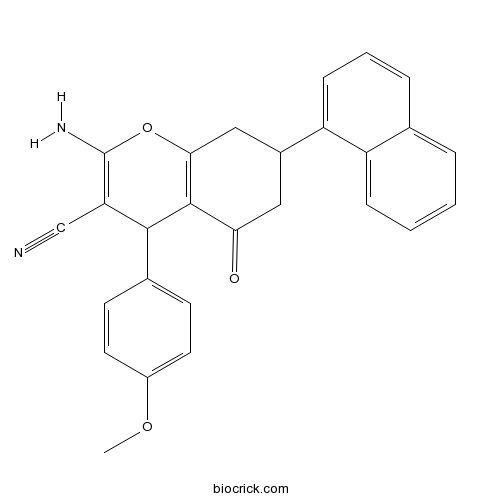
-
BCC7892
MitMAB
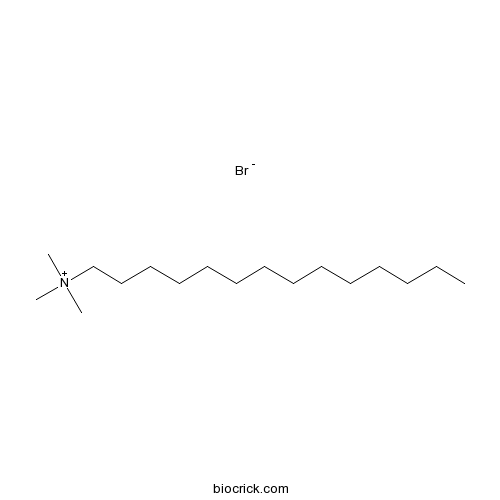
-
BCC7893
OctMAB
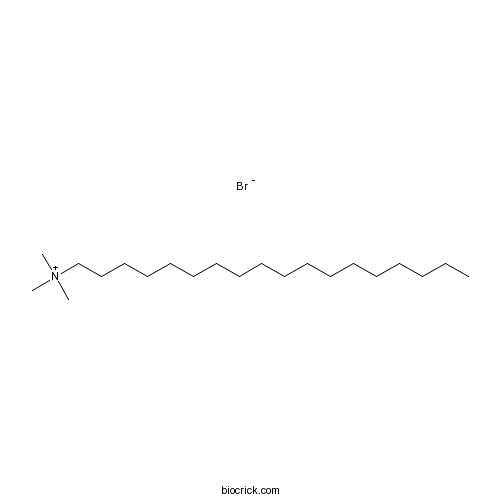
-
BCC6059
4,4-Pentamethylenepiperidine hydrochloride
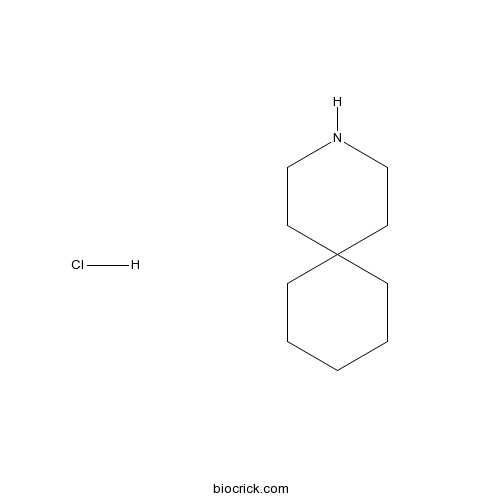
-
BCC6198
A 804598
A-804598 is a CNS penetrant, competitive and selective P2X7 receptor antagonist with IC50s of 9 nM, 10 nM and 11 nM for mouse, rat and human P2X7 receptors, respectively.
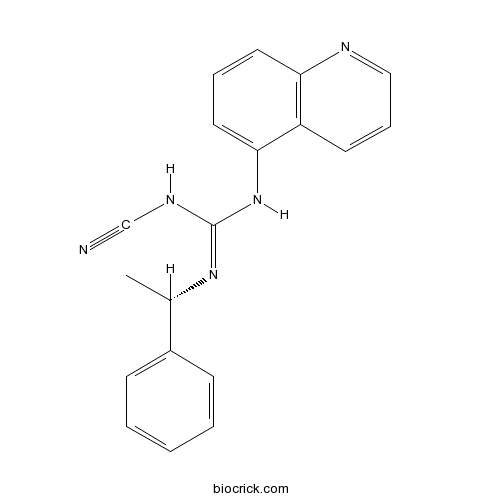
-
BCC7891
Dynole 34-2
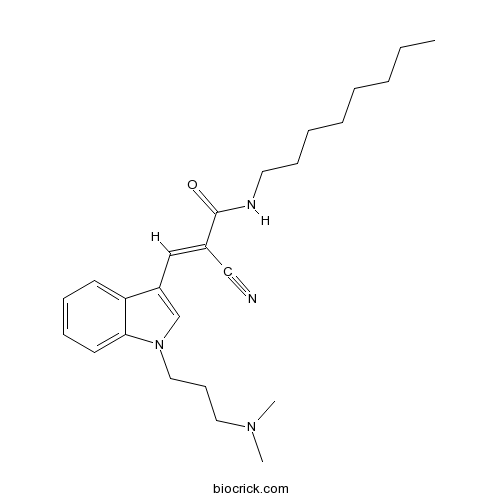
-
BCC7643
BzATP triethylammonium salt
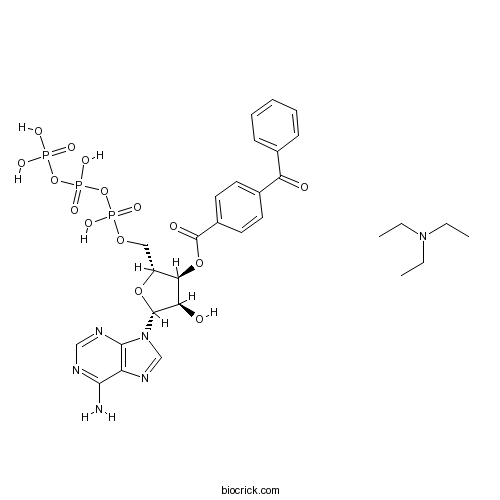
-
BCC5946
HU 211
Dexanabinol (HU-211) is an artificially synthesized cannabinoid derivative and lacks cannabimimetic effects. Dexanabinol exhibits not only the antioxidant and neuroprotective activities in brain but also anti-inflammatory activity by inhibiting NF-κB and decreasing cytokines such as TNFα and interleukin-6, which could ensure the integrity of BBB and reduce cell apoptosis and death. Dexanabinol is widely used in head injury or stroke treatment and has been shown to be safe in animals and humans.
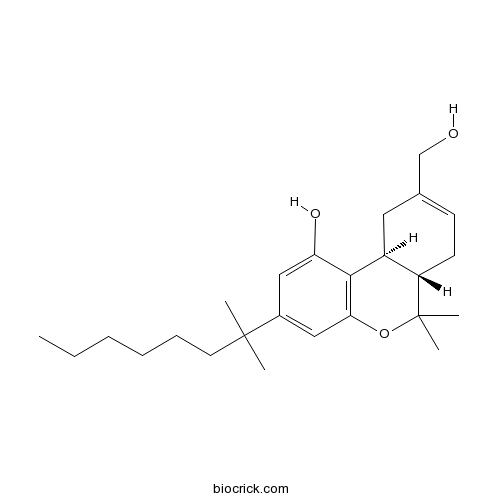
-
BCC7231
Linopirdine dihydrochloride
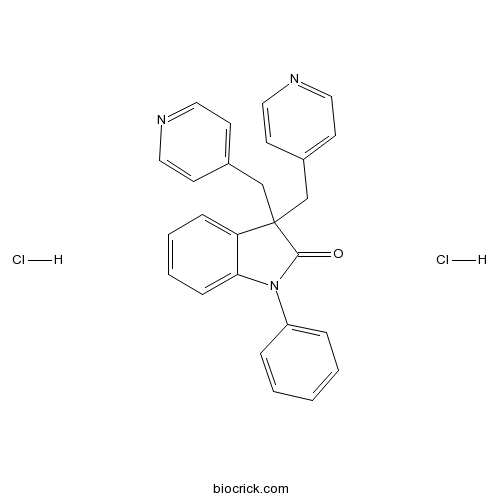
-
BCC7309
PPPA
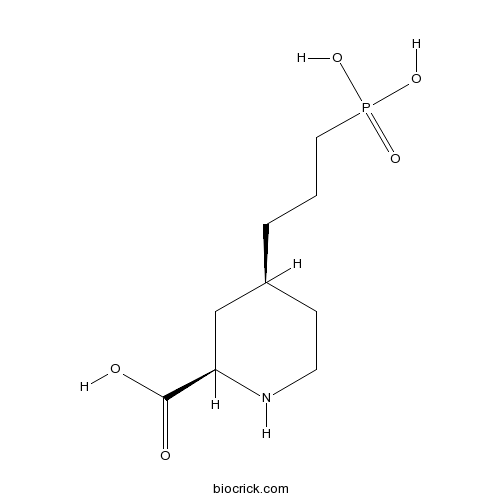
-
BCC1664
Ivacaftor hydrate
Ivacaftor hydrate is an orally bioavailable CFTR potentiator, used for cystic fibrosis treatment.
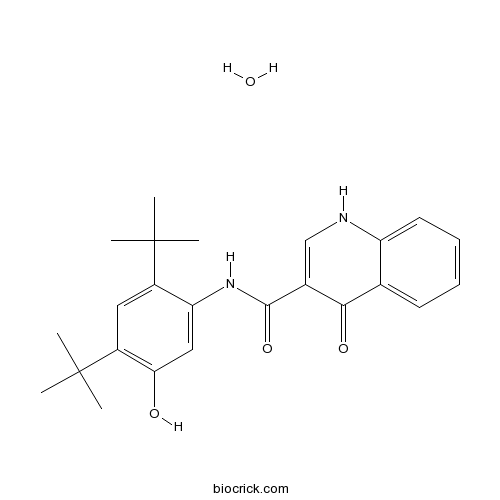
-
BCC1663
Ivacaftor benzenesulfonate
Ivacaftor benzenesulfonate is an orally bioavailable CFTR potentiator, used for cystic fibrosis treatment.
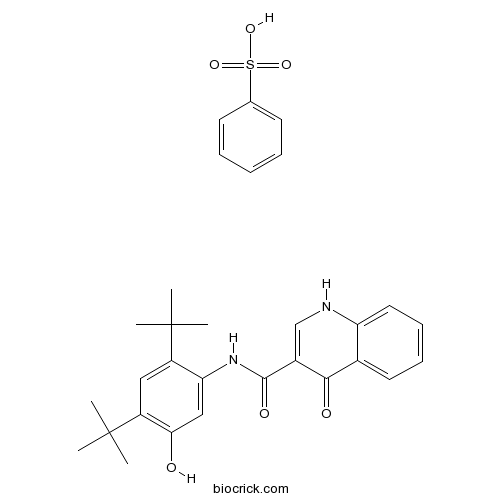
-
BCC7115
Tracazolate hydrochloride
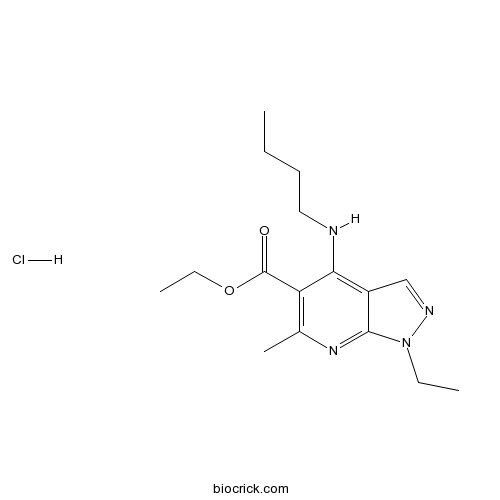
-
BCC7087
CGP 78608 hydrochloride
CGP 78608 hydrochloride is a highly potent and selective antagonist at the glycine-binding site of the NMDA receptor, with an IC50 of 6 nM. CGP 78608 acts as a potentiator of GluN1/GluN3A-mediated glycine currents, with an estimated EC50 in the low nM range (26.3 nM). Anticonvulsant activity.
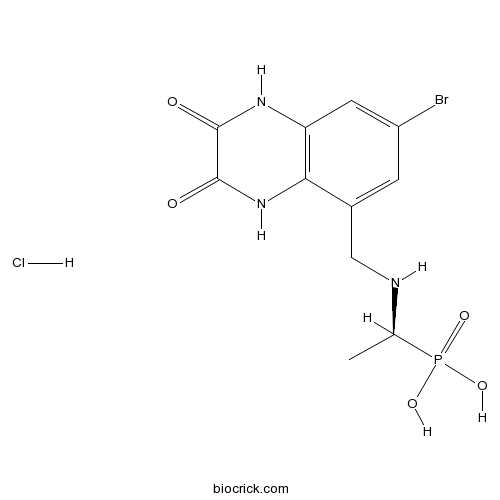
-
BCC1682
KN-92 phosphate
KN-92 phosphate is an inactive derivative of KN-93.
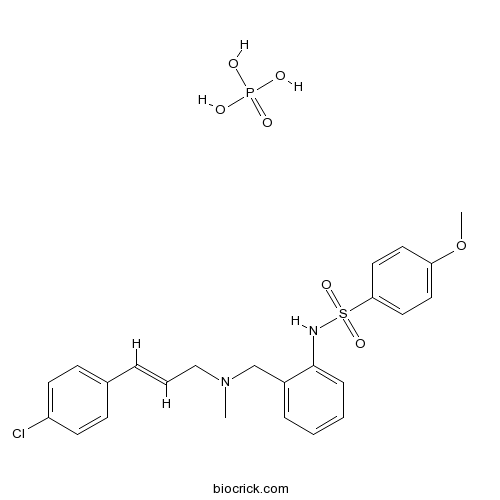
-
BCC7182
E-4031 dihydrochloride
E-4031 is a class III antiarrhythmic agent which selectively blocks hERG potassium channel.
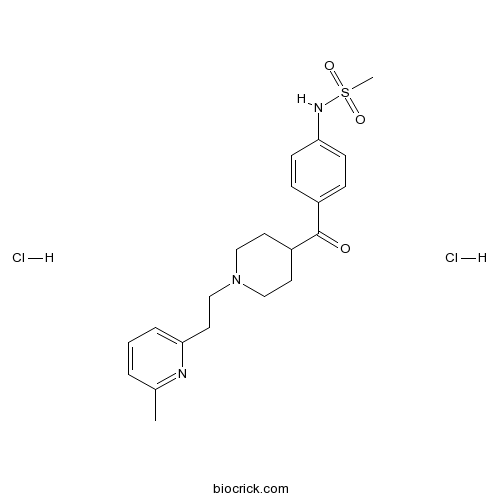
-
BCC6089
cis-Ned 19
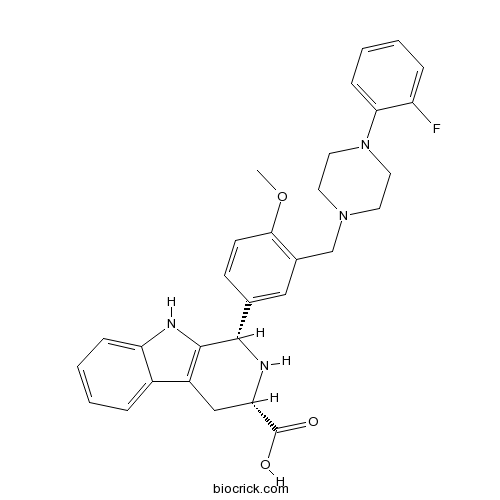
-
BCC7308
PMPA (NMDA antagonist)
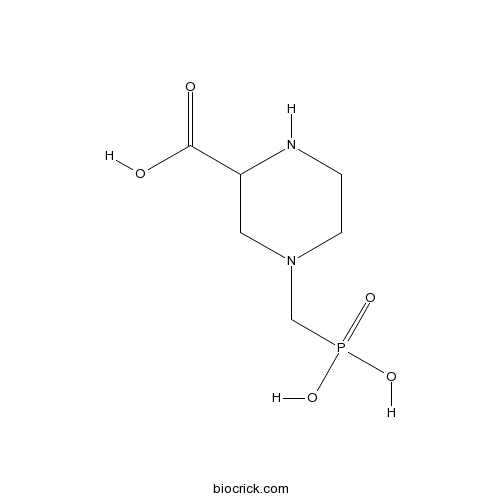
-
BCC4373
Golgicide A
Golgicide A is a potent, highly specific, and reversible inhibitor of the cis-Golgi ADP-ribosylation factor guanine nucleotide exchange factors (ArfGEF), GBF1. Golgicide A drastically reduced replication of coxsackievirus B3 (CVB3) and other human enterovirus species.
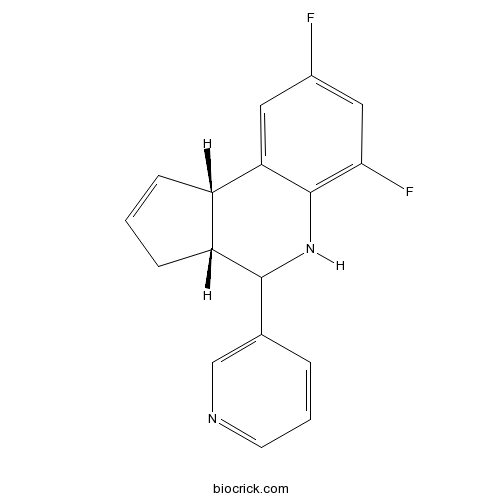
-
BCC6562
Phaclofen
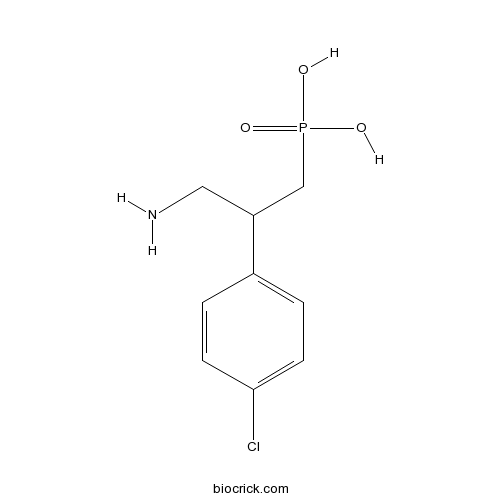
-
BCC6569
CNQX
CNQX (FG9065) is a potent AMPA/kainate receptor antagonist.
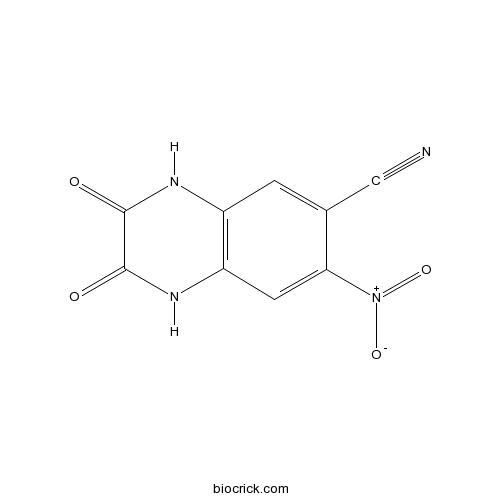
-
BCC6305
8-pCPT-2-O-Me-cAMP-AM
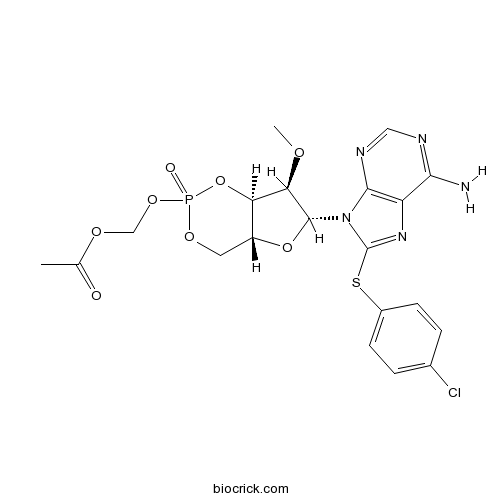
-
BCC1241
VX-661
Tezacaftor (VX-661) is a second F508del CFTR corrector and help CFTR protein reach the cell surface.
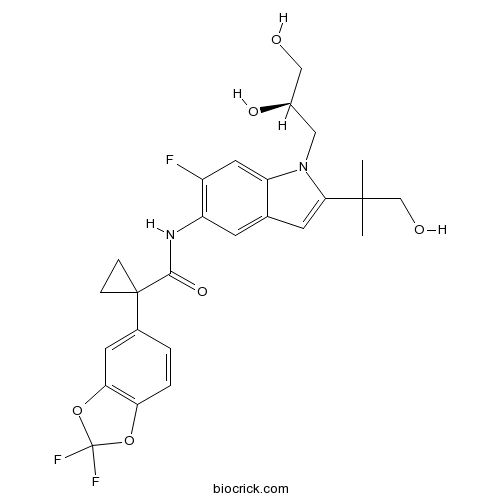
-
BCC3770
Dofetilide
Dofetilide(Tikosyn) is a class III antiarrhythmic agent.
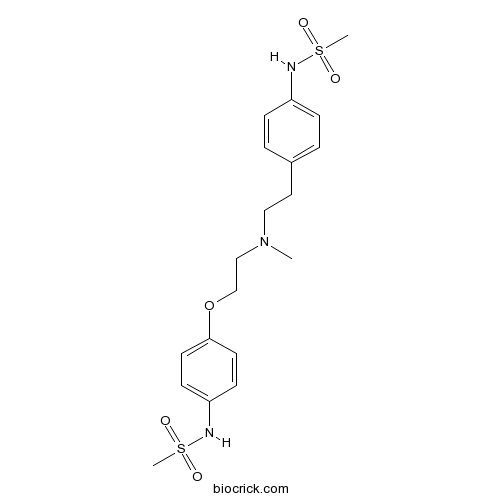
-
BCC7672
EIPA
EIPA (L593754) is a TRPP3 channel inhibitor with an IC50 of 10.5 μM. EIPA also inhibits Na+/H+-exchanger (NHE) and macropinocytosis.
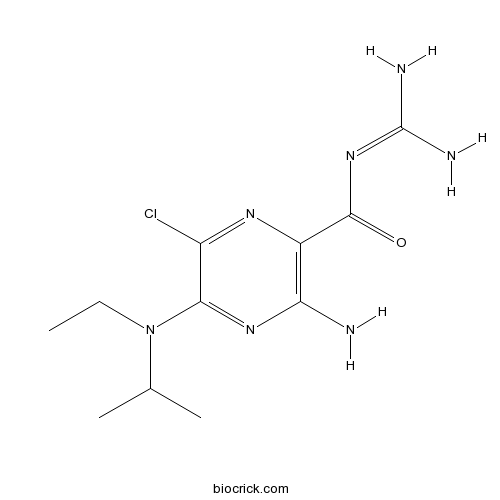
-
BCC6244
TC-I 2000
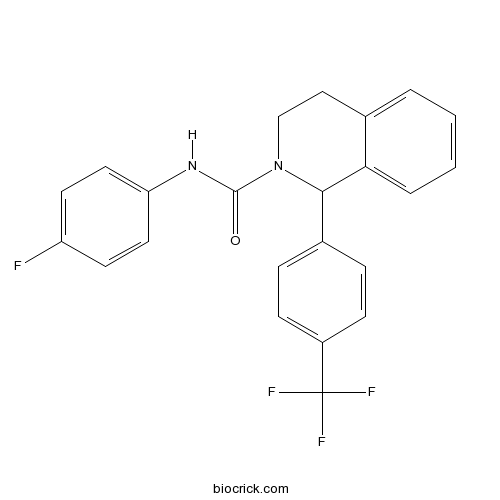
-
BCC7771
Pyr3
Pyr3 is a selective inhibitor of transient receptor potential canonical channel 3 (TRPC3), with an IC50 of 700 nM for TRPC3-mediated Ca2+ influx.
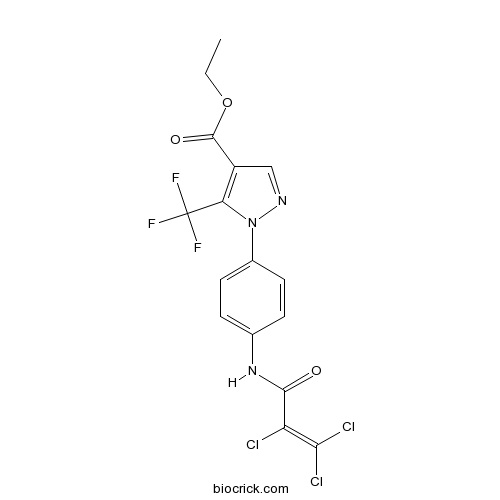
-
BCC7673
Phenamil
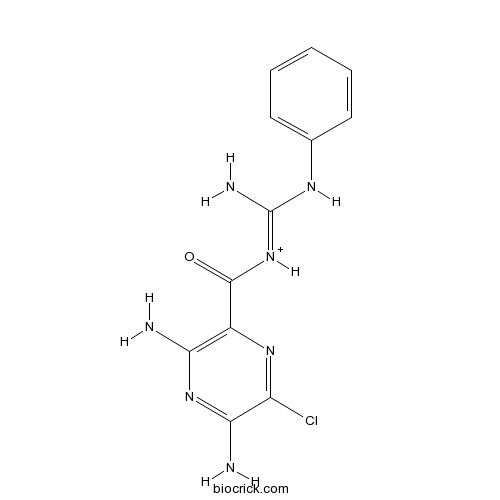
-
BCC1748
Mibefradil
Mibefradil (Ro 40-5967) is a calcium channel blocker with moderate selectivity for T-type Ca2+ channels displaying IC50s of 2.7 μM and 18.6 μM for T-type and L-type currents, respectively.
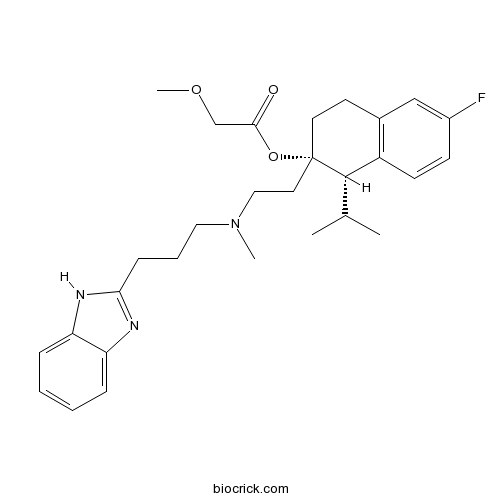
-
BCC1749
Mibefradil dihydrochloride
Mibefradil dihydrochloride (Ro 40-5967 dihydrochloride) is a calcium channel blocker with moderate selectivity for T-type Ca2+ channels displaying IC50s of 2.7 μM and 18.6 μM for T-type and L-type currents, respectively.
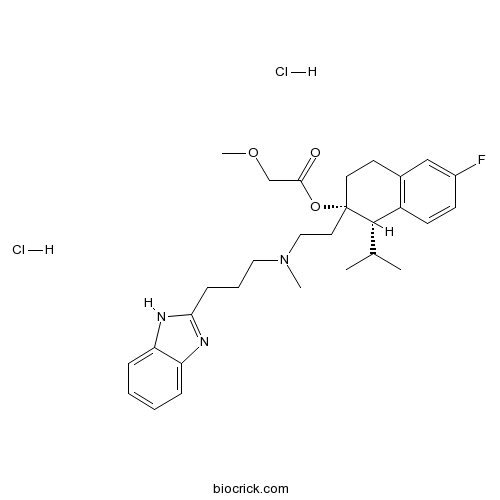
-
BCC7967
A 967079
A-967079 is a selective TRPA1 receptor antagonist with IC50s of 67 nM and 289 nM at human and rat TRPA1 receptors, respectively, and has good penetration into the CNS.
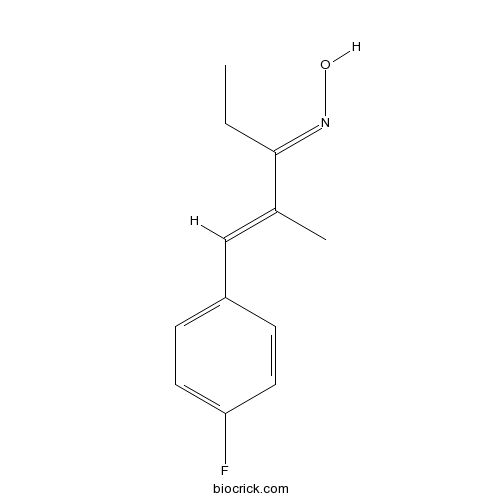
-
BCC7112
STO-609 acetate
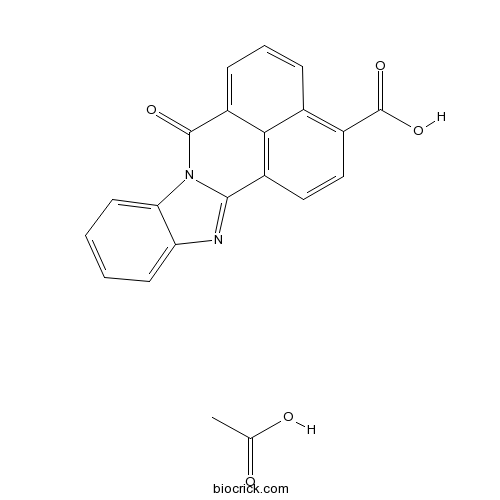
-
BCC6579
2-Hydroxysaclofen
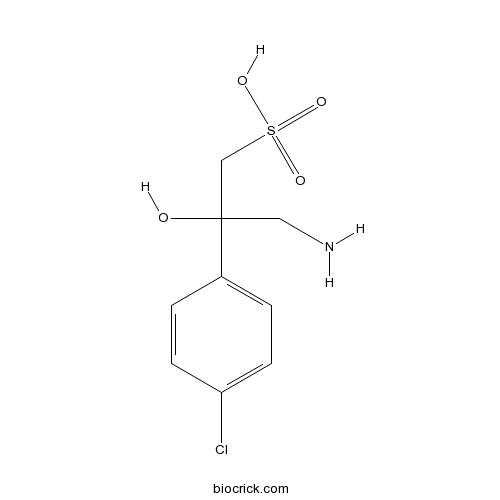
-
BCC6999
D-CPP-ene
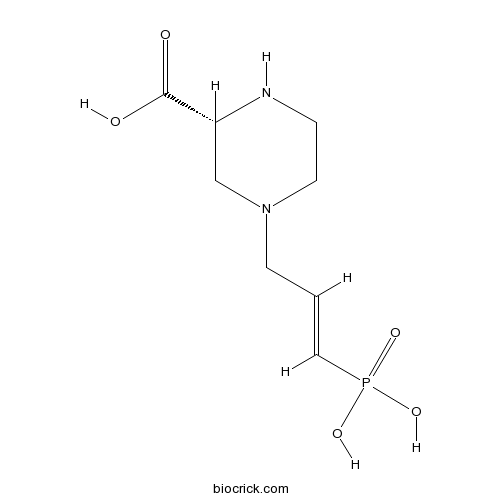
-
BCC4160
Felbamate hydrate
Felbamate hydrate (W-554 hydrate) is a potent nonsedative anticonvulsant whose clinical effect may be related to the inhibition of N-methyl-D-aspartate (NMDA) .
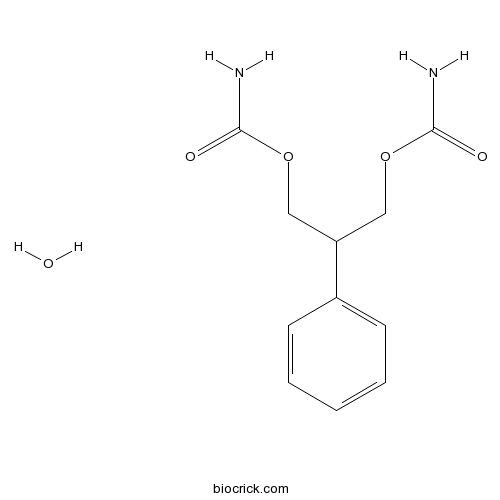
-
BCC7292
N20C hydrochloride
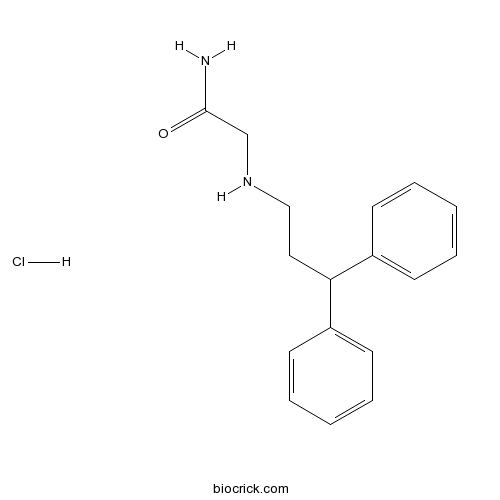
-
BCC6050
Enterostatin
Enterostatin, human, mouse, rat is a pentapeptide that reduces fat intake.
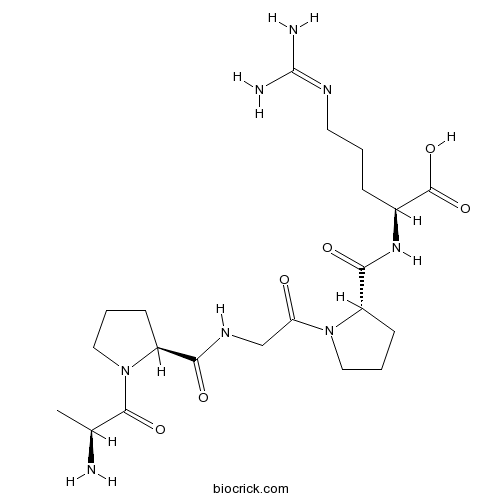
-
BCC7009
Loreclezole hydrochloride
Loreclezole, an antiepileptic compound, is a selective GABAA receptor modulator and acts as a positive allosteric modulator of β2 or β3-subunit containing receptors.
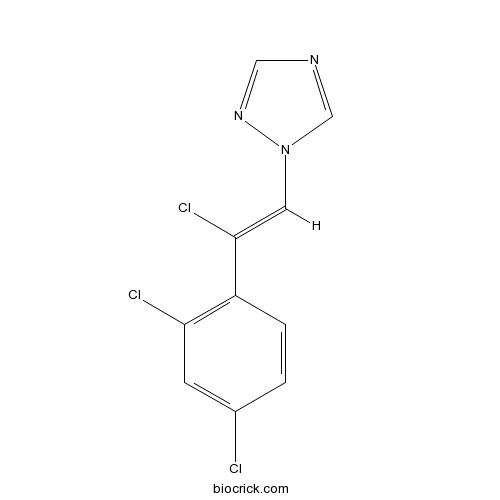
-
BCC6608
L-CCG-lll
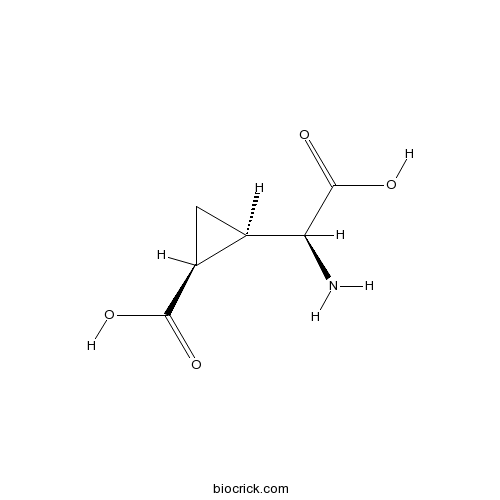
-
BCC6013
GLYX 13
Rapastinel (GLYX-13) is an N-methyl-D-aspartate receptor (NMDAR) modulator that has characteristics of a glycine site partial agonist.
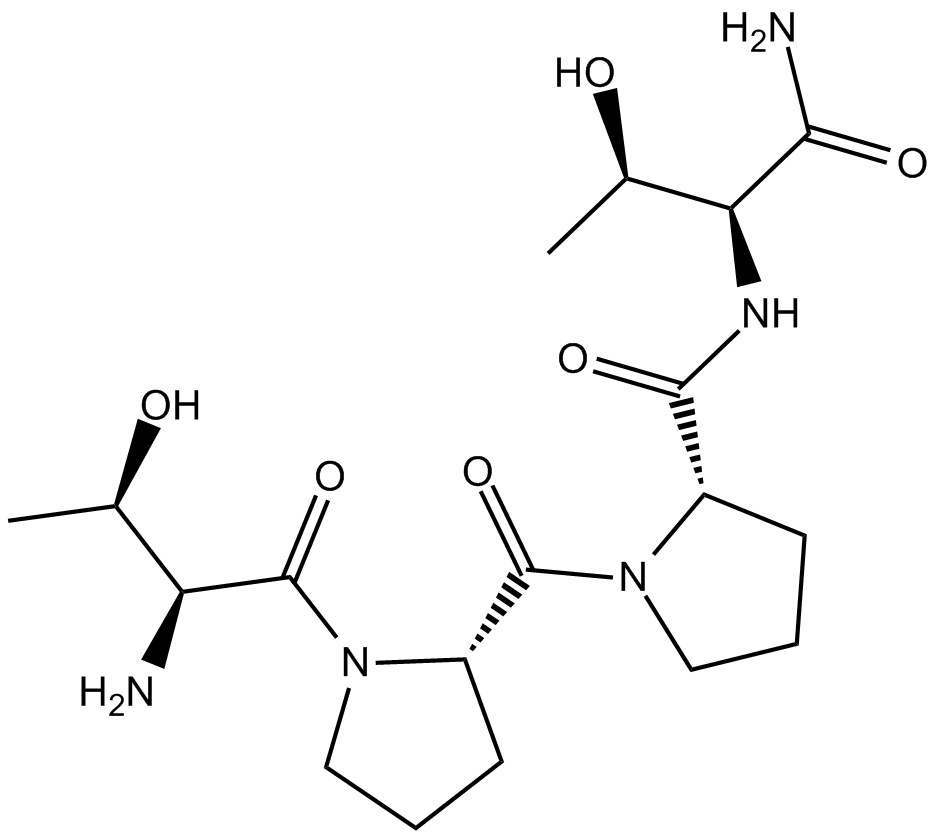
-
BCC5228
Rabeprazole
Rabeprazole is an antiulcer drug in the class of proton pump inhibitors.
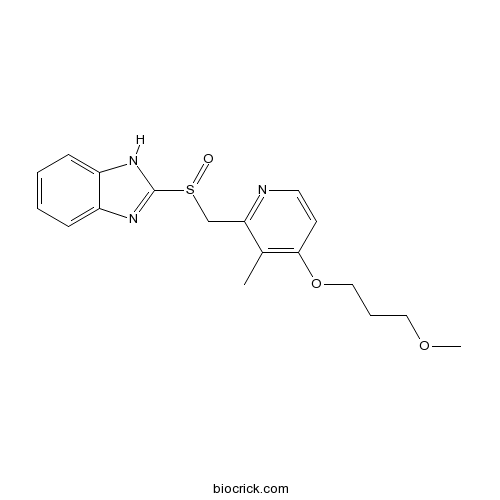
-
BCC5227
Rabeprazole sodium
Rabeprazole sodium(LY307640 sodium) is an antiulcer drug in the class of proton pump inhibitors.
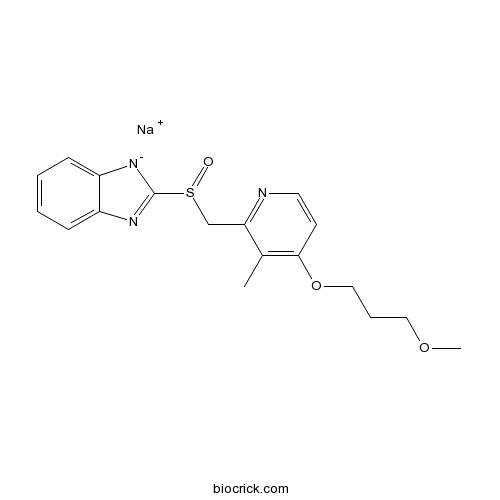
-
BCC7758
5,7-Dichlorokynurenic acid sodium salt
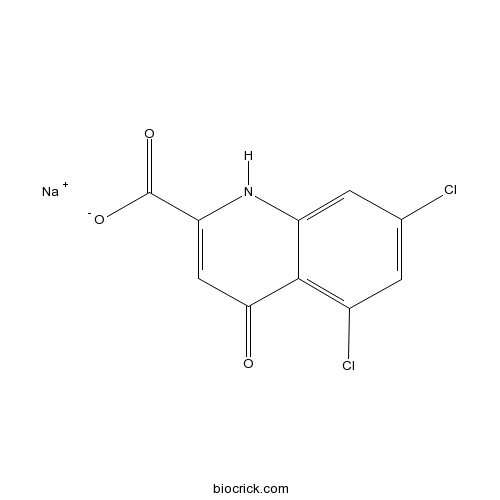
-
BCC6624
NBQX
NBQX is a highly selective and competitive AMPA receptor antagonist.
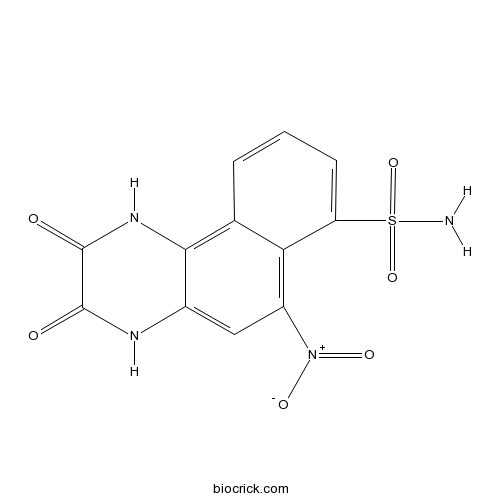
-
BCC7507
Fumitremorgin C
Fumitremorgin C is a potent and selective ABCG2/BRCP inhibitor.
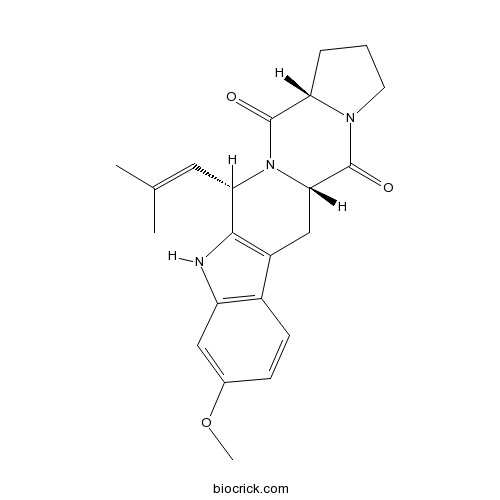
-
BCC1726
M2 ion channel blocker
M2 ion channel blocker is capable of inhibiting and blocking the activity of M2 ion channel;Antiviral agent.
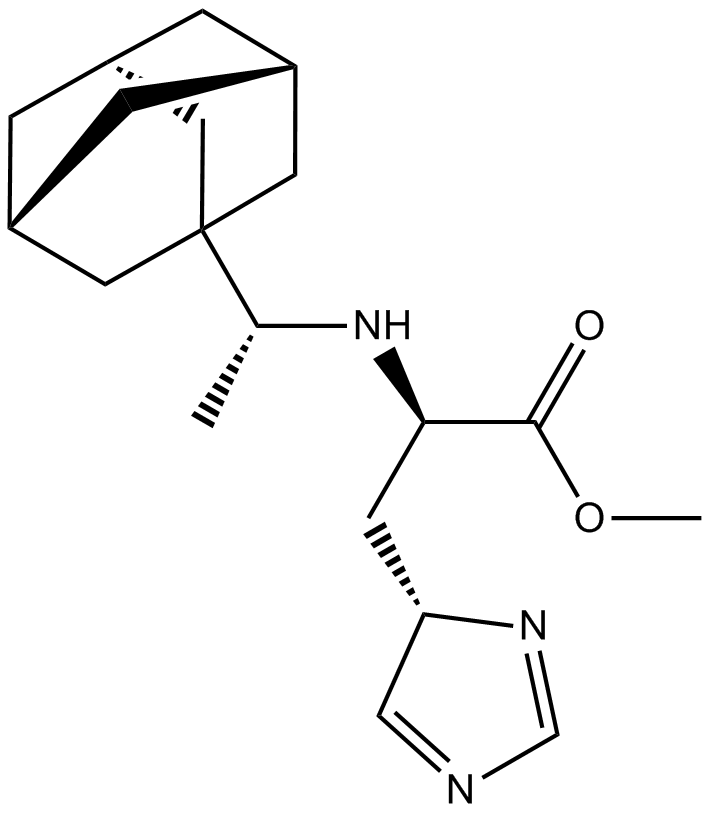
-
BCC3922
IOWH-032
IOWH-032 is a novel and potent CFTR inhibitor (IC50=1.01 uM) in T84 and CHO-CFTR cell based assays.
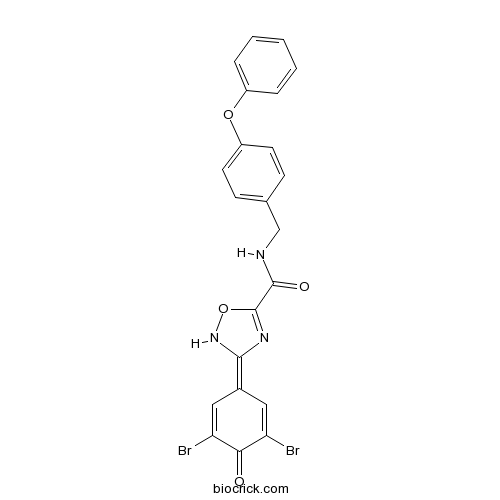
-
BCC7280
Eliprodil
Eliprodil(SL-820715) is a non-competitive NR2B-NMDA receptor antagonist(IC50=1 uM), less potent for NR2A- and NR2C-containing receptors(IC50> 100 uM).
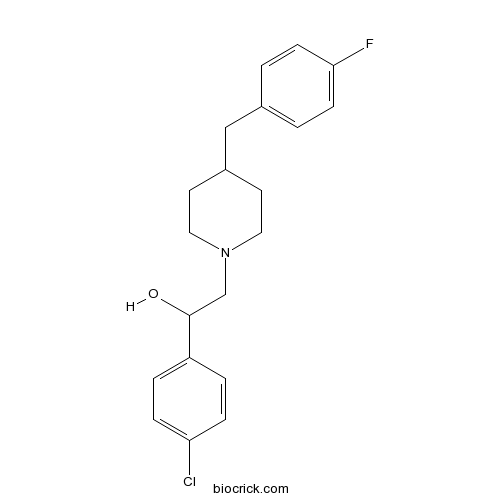
-
BCC1959
Sodium Channel inhibitor 1
Sodium Channel inhibitor1, one of 3-Oxoisoindoline-1-carboxamides, is a novel and selective voltage-gated sodium channel for pain treatment.
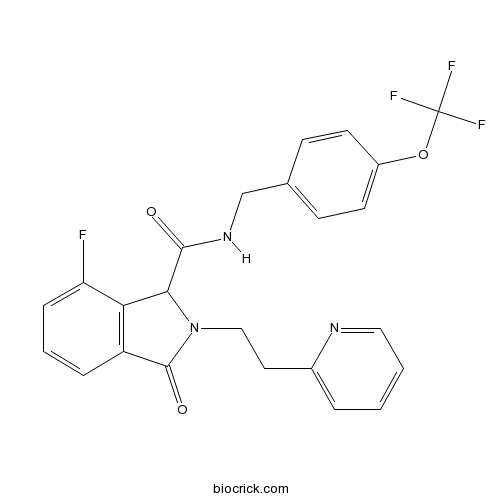
-
BCC5430
Esomeprazole magnesium salt
Esomeprazole magnesium salt is a proton pump inhibitor which reduces acid secretion through inhibition of the H+ / K+ ATPase in gastric parietal cells.
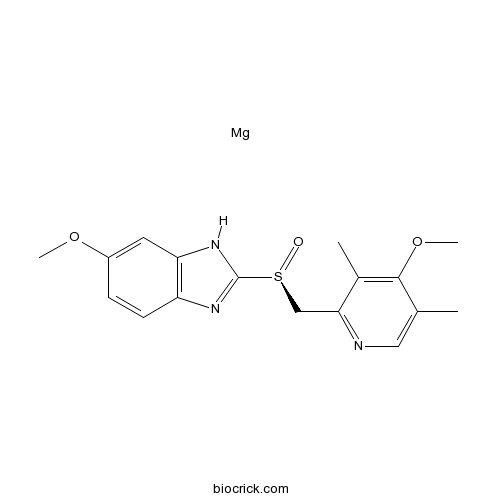
-
BCC5412
Mofegiline hydrochloride
Mofegiline hydrochloride (MDL72974A) is a potent and selective enzyme-activated irreversible inhibitor of MAO-B; shows marked selectivity for the B form (IC50 = 680 and 3.6 nM for MAO-A and MAO-B).
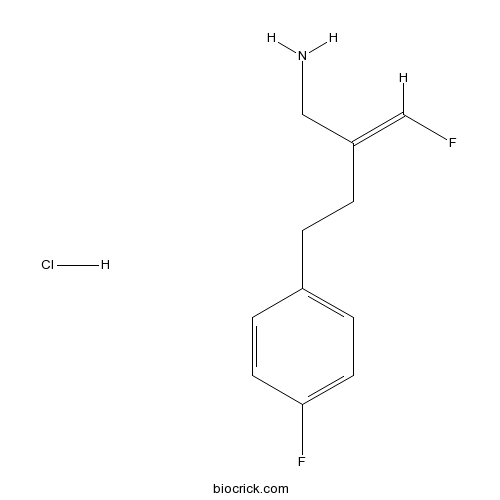
-
BCC7050
FPL 64176
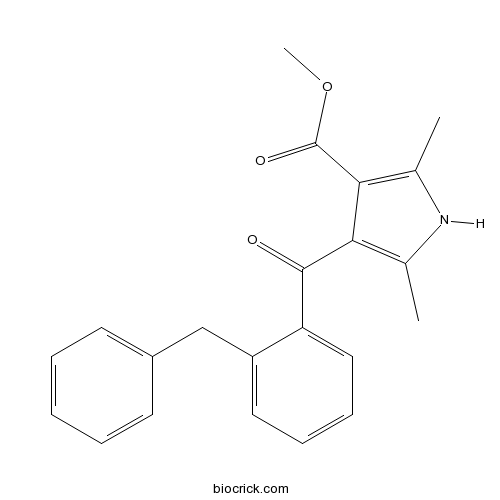
-
BCC7135
IEM 1460
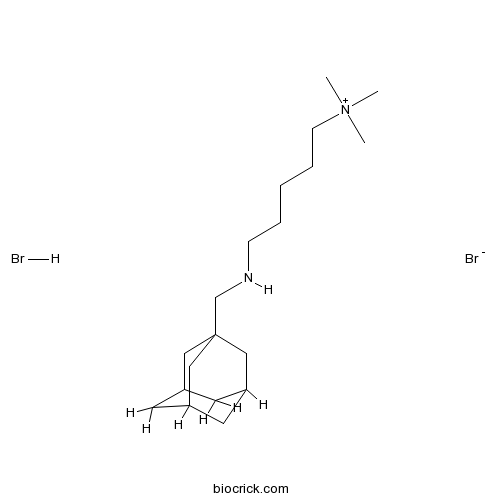
-
BCC6179
TC-N 1752
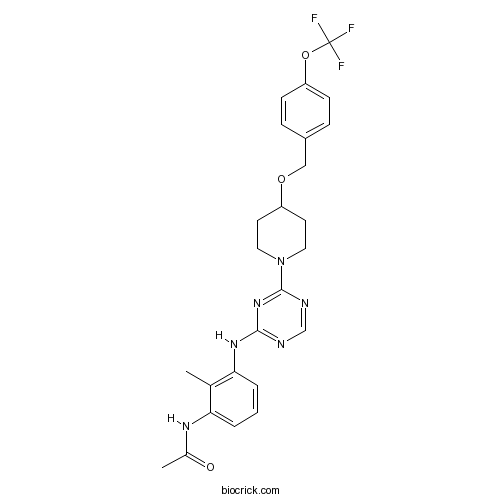
-
BCC7181
SR 33805 oxalate
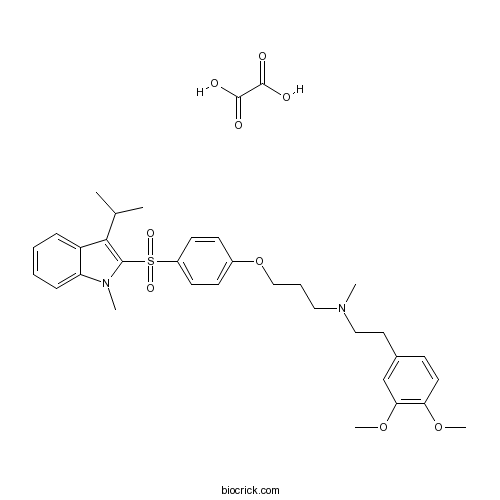
-
BCC7454
POM 1
Sodium metatungstate (POM-1) is a potent ecto-nucleoside triphosphate diphosphohydrolase (NTPDase) inhibitor, with Ki values of 2.58 μM, 3.26 μM, and 28.8 μM for NTPDase 1, NTPDase 3 and NTPDase 2 respectively. Sodium metatungstate (POM-1) inhibits ATP breakdown but also blocks central synaptic transmission, an action independent of NTPDase inhibition.
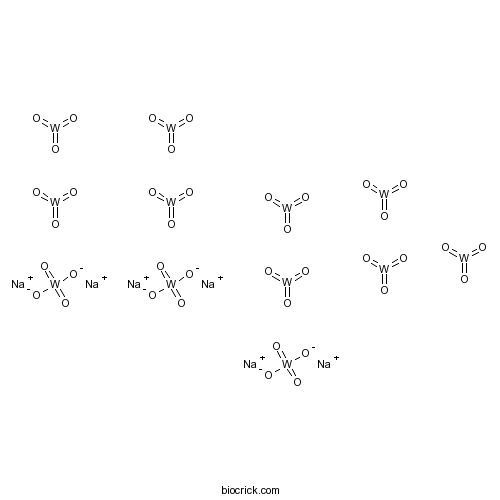
-
BCC7560
DMCM hydrochloride
DMCM hydrochloride is a nonselective full inverse agonist of benzodiazepine. DMCM shows bnding afinity at human recombinant GABAA αxβ3γ2 receptor subtypes with Kis of 10 nM, 13 nM, 7.5 nM, 2.2 nM for α1, α2, α3, and α5 receptors, respectively.
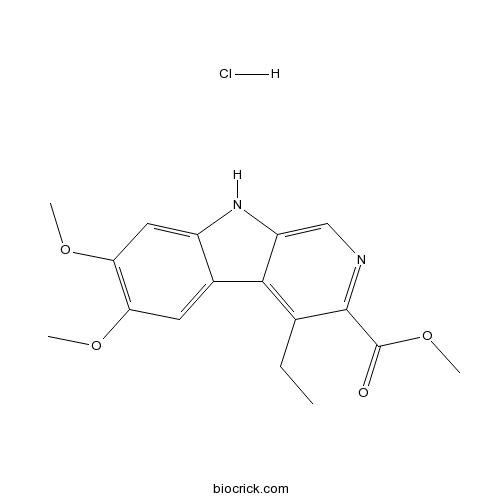
-
BCC7227
ZK 93423 hydrochloride
Potent benzodiazepine agonist
